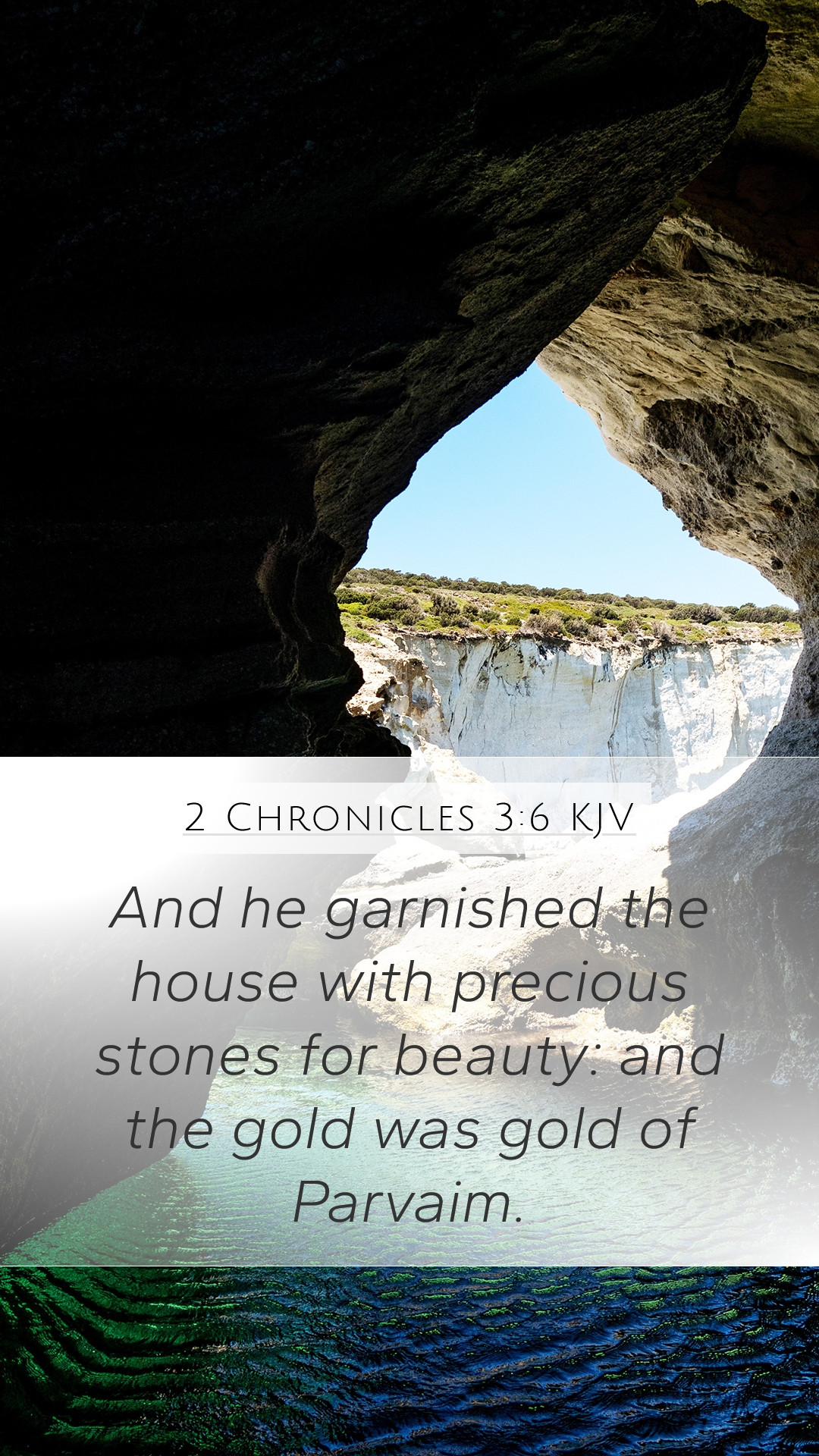Bible Verse Meaning of 2 Chronicles 3:6
This comprehensive commentary on 2 Chronicles 3:6 aims to provide a deeper understanding of this scripture. We will explore insights from prominent public domain commentaries including those by Matthew Henry, Albert Barnes, and Adam Clarke. The goal is to assist anyone searching for bible verse meanings, bible verse interpretations, and understanding Scripture.
Overview of 2 Chronicles 3:6
In the context of 2 Chronicles 3:6, we find King Solomon engaged in the construction of the temple. The verse states, “And he garnished the house with precious stones for beauty: and the gold was gold of Parvaim.” This highlights not just the physical beauty of the temple but also its spiritual significance.
Commentary Insights
Matthew Henry
Matthew Henry emphasizes the importance of adorning the house of God with the best materials available. He believes this act reflects the glory of God and the honor due to Him. The choice of precious stones and gold symbolizes divine beauty and God's majesty, suggesting that the physical temple serves as a metaphor for spiritual worship.
Albert Barnes
Albert Barnes notes that the use of **Parvaim** gold is significant as it indicates the wealth of resources available to Solomon. He elaborates that the meticulous detailing in the temple's construction demonstrates the reverence of the Israelites towards God. He argues that such efforts in beautifying the temple were not just for aesthetics but were acts of devotion, illustrating the importance of offering the best to the Lord.
Adam Clarke
Adam Clarke provides additional context, suggesting that the gold of Parvaim was highly valued and rare, symbolizing the kingdom's glory and favor from God. Clarke emphasizes that the rich decorations are reminders of the beauty of holiness and how believers should approach worship, with sincerity and dedication, ensuring that offerings, both material and spiritual, reflect God’s worthiness.
Key Themes and Lessons
- Beauty in Worship: The adornment of the temple teaches the value of presenting the best to God, encouraging believers to consider the quality of their own worship.
- Divine Glory: The materials used indicate an understanding of God’s glory and the honor He deserves which can be reflected in believers’ lives as well.
- Symbolism of Treasures: Precious stones and gold symbolize not only material wealth but also the spiritual richness of a relationship with God.
Bible Cross References
- 1 Kings 6:20-22 - Discusses the interior of the temple and its beauty.
- Exodus 25:3-7 - The ingredients for building the sanctuary.
- Psalm 96:6 - Emphasizes the splendor of God's glory.
- Isaiah 60:13 - A vision of the beautiful temple adorned with preciousness.
- Hebrews 9:24 - The heavenly sanctuary compared to the earthly temple.
Applications for Today
Understanding 2 Chronicles 3:6 encourages modern believers to evaluate how they present their worship and offerings to God. It challenges individuals and bible study groups to reflect not only on the physical aspects of worship but also on the spiritual intentions behind them.
In an age where resources are abundant, this verse informs how contemporary worship can be enriched by prioritizing God’s glory and beauty in all offerings, whether they be time, resources, or talents.
Conclusion
In summary, the interpretation of 2 Chronicles 3:6 reveals layers of meaning about beauty, dedication, and reverence in worship. Through the insights of esteemed commentators, believers can better understand how to approach God with appropriate honor and a spirit of excellence. As you continue your Bible study lessons or partake in online Bible study, reflect on the significance of adornments, not just of temples, but within your hearts and daily lives.


